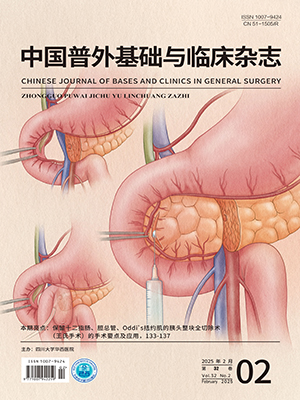Objective To investigate the diagnostic value of proton magnetic resonance spectroscopy (1 H-MRS) on the quantification of hepatic steatosis at 3.0 T MR united.
Methods Twenty-two patients who were candidated for liver surgery (living liver transplantation donor candidates, lobectomy or segmental resection for focal liver diseases, etc.) were enrolled in this study. 1 H-MRS was conducted with point resolved selective spectroscopy (PRESS) sequence, using SAGE software packages. The values of water peak (PW), lipid peak (PL) were measured, the area under water peak (AW) and lipid peak (AL), and then the relative lipid content of liver cells (RLC1, RLC2) was calculated. All subjects underwent surgical resection of liver shortly after MR scanning, fresh frozen specimens were obtained for Sudan Ⅲ staining, and staging was conducted.
Results In all 22 patients, 7 patients without fatty liver, 11 patients with mild fatty liver, 4 patients with moderate or severe fatty liver. Intercomparison between different histopathological grades showed following findings: the values of PL, AL, RLC1 and RLC2 had statistical significance (P lt;0.05). The values of PL, AL, RLC1 and RLC2 were positively correlated with the proportion of fatty degenerative cells (PFDC), P lt;0.05, and the highest correlation factor was 0.771 (RLC1 to the PFDC).
Conclusion 1 H-MRS can accurately quantify liver fat content and reflect the severity of hepatic steatosis. It has the potential to replace invasive liver biopsy.
Citation: ZHAO Liming,SONG Bin,CHEN Guangwen,YUAN Fang,HUANG Zixing,YANG Ninjing.. Value of 1 H-MR Spectroscopy for Quantification of Hepatic Steatosis on 3.0 T MR System. CHINESE JOURNAL OF BASES AND CLINICS IN GENERAL SURGERY, 2010, 17(1): 92-96. doi: Copy
Copyright © the editorial department of CHINESE JOURNAL OF BASES AND CLINICS IN GENERAL SURGERY of West China Medical Publisher. All rights reserved




